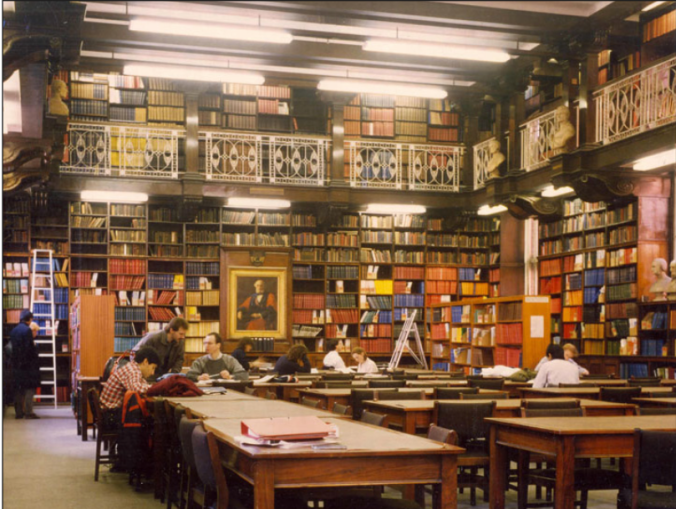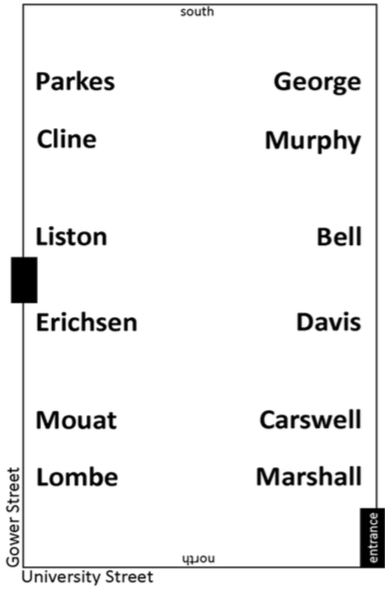Emma Prideaux
During the summer of 2015, 7 portrait busts, once part of a larger group of sculptures displayed in UCL’s old Medical School Library in Rockefeller Building, came to the attention of the conservation team at UCL PACE Museums and Collections (http://www.ucl.ac.uk/museums). These are the likenesses of formative figures associated with UCL’s medical school and University College Hospital and are to be put on display in the recently refurbished UCL Cruciform Hub (https://www.ucl.ac.uk/library/sites/cruciform). But before this can happen, the busts must be first cleaned and conserved!

Figure 1. The Medical Library (Now Grant Museum) (Source: Cain 2011, 27)
The busts, two made of plaster and five made of marble, were originally arranged on plinths in the old Medical School Library, the Rockefeller Building, overlooking the central room. These original Plinths can still be seen in the Grant Museum of Zoology, which has occupied the space since 2014 (http://www.ucl.ac.uk/museums/zoology/). The busts were removed from the Rockefeller Building in 1999, when the Medical School Library moved to the Cruciform Building, and placed into storage. In June 2013 the Medical School Library in the Cruciform Building was refurbished. When it reopened as the UCL Cruciform Hub in 2014, it was decided that the busts should be returned to their vigil over studying medical students.

Figure 2. The old Medical School Library, the Rockefeller building. (Source: Cain 2011, 7)

Figure 3. The original position of some of the busts in the old Medical School Library (Source: Cain 2011, 44)
Before the busts can be installed, though, a lot of conservation work needs to be done. Each of the 7 sculptures has been allocated to a first year MSc conservation students (UCL), who will examine, study and then propose a course of treatment so that the busts can be displayed together on a plinth in the Cruciform Hub. It will be overseen by Kate Cheney head librarian, Susi Pancaldo, head of Conservation in UCL museums and by me, a second year intern in the program (http://www.ucl.ac.uk/archaeology/studying/masters/degrees/msc_conservation)

Figure 4. Edward William Murphy. One of the old busts that is being conserved. (Source: Cain 2011, 43)
The Blogs
This is the first of a series of blogs that will cover what, why, when and how we will treat these statues. By sharing the steps we take as our work progresses, we hope to reveal how museum objects sometimes need to go through transformation before they can be displayed. We hope to showcase the work of conservators and, in particular, to share with our readers the unique set of challenges that each bust presents to students in the Institute of Archaeology’s conservation lab and the solutions we’ve created.
Hiya
Hope you feeling better.
I don’t know if you subscribe to this but they will be running a ‘Bust cleaning’ programme that they will be blogging about that you may wish to follow.
Lenax
LikeLike
Pingback: Conservation of the Cruciform Hub’s Historical Busts | Conservation Lab Chat